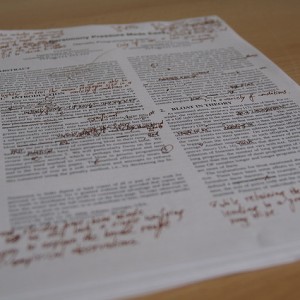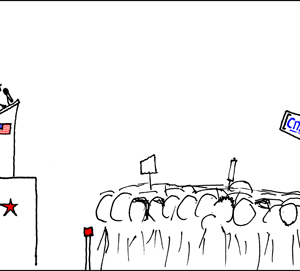What does it mean to cite using MLA, APA, or Chicago style?
MLA, APA, and Chicago represent three prominent citation styles employed in academic writing. These styles serve as standardized methods for acknowledging and attributing sources from which concepts, language, and visuals are derived. While distinct in their formatting and citation guidelines, they all share the fundamental purpose of crediting the original authors or creators, ensuring the integrity and authenticity of the information being referenced. These citation styles establish a uniform framework for scholars to accurately cite sources, thereby fostering a culture of academic honesty and intellectual integrity within collegiate writing.

The practice of citing sources might appear as an extra or redundant step, yet it holds immense significance in the realm of academic writing. Beyond being a requisite aspect of scholarly etiquette, proper citation is a means of validating the credibility and reliability of one’s arguments. It fortifies the academic discourse by acknowledging the intellectual contributions of others, enabling a transparent trail of information that aids readers in retracing and verifying the sources used. Ultimately, citation styles play a pivotal role in upholding the ethical standards of research and scholarship while ensuring due recognition to the original creators of ideas and information.
Why do I need to cite sources
When venturing into academic writing, citing sources becomes a cornerstone of ethical and effective communication. The practice of citing sources isn’t just about preventing plagiarism; it’s a mark of integrity, acknowledging the contributions of those who’ve laid the groundwork in the academic landscape. Moreover, citing sources acts as a bridge, connecting your thoughts and research to a broader scholarly conversation. Understanding why and how to cite sources isn’t merely a formality but an essential aspect of scholarly engagement and integrity.
The Significance of Source Citation
Citing sources serves as a crucial step in academic writing, primarily to avoid plagiarism. It’s a way of acknowledging the original creators of ideas or information, thereby safeguarding against the unethical act of claiming someone else’s work as our own. However, beyond this fundamental ethical responsibility, citing sources plays a pivotal role in establishing the credibility and integrity of a writer’s work. By attributing sources, writers not only showcase their commitment to honesty but also position themselves as informed contributors to the ongoing scholarly discourse.
Establishing Credibility and Scholarly Engagement
Citations are not just about avoiding plagiarism; they are a testament to a writer’s credibility. Through citations, writers demonstrate their depth of knowledge and engagement within their field, connecting their ideas with established research and intellectual conversations. It’s a way to affirm the validity of arguments and claims by anchoring them in the foundation of existing scholarship. Furthermore, citing sources isn’t merely a formality; it’s a way of contributing to the scholarly conversation, fostering an environment where ideas can be traced back to their origins for further exploration and scrutiny.
Understanding and Adhering to Citation Styles
Different academic fields and disciplines employ distinct citation styles, each tailored to their unique values and preferences. Understanding these styles extends beyond simple formatting; it offers insights into the disciplinary norms and priorities. Each style reflects the conventions and expectations of its respective field. Learning about these distinctions provides valuable insights into the various academic disciplines and the reasons behind their preferences. It’s an exercise in understanding the distinct nuances and advantages offered by each citation system, contributing to a deeper comprehension of disciplinary methodologies and scholarly practices.
Modern Language Association (MLA)
Application in Humanities Disciplines
MLA (Modern Language Association) style remains a primary citation format embraced within Humanities disciplines, specifically English and Philosophy. Its prevalent use within these fields can be attributed to its meticulous guidelines designed to meet the specific needs of these disciplines. MLA’s focus on clarity and precision in referencing sources aligns seamlessly with the nuanced requirements of literary analyses, philosophical discourse, research endeavors, and academic essays prevalent in Humanities studies.
The style’s emphasis on exact words and detailed referencing, especially in literary analysis and philosophical arguments, aligns with the meticulous nature of these disciplines. The highlighting of page numbers in in-text citations aids in pinpointing specific passages or ideas within texts, an essential element in analyzing literature or philosophical texts. By prioritizing exact words and direct quotations, MLA assists scholars in presenting accurate and detailed references, ensuring the precision and integrity of their academic work within the nuanced realms of English and Philosophy studies.
Emphasis on Quotations
One of MLA’s distinctive features is its emphasis on exact quotations from other writers. In academic writing, quotes often play a vital role, lending support to arguments and providing direct evidence. MLA advocates for the proper integration of quoted text, encouraging writers to maintain the integrity of the author’s original words while adhering to precise citation methods.
In-text Citation Details
MLA’s in-text citation system typically involves incorporating page numbers to facilitate quick and precise referencing. This inclusion assists readers in locating specific quotes or ideas within the text itself. By citing page numbers along with author names, MLA ensures the accuracy and accessibility of sourced material, offering readers direct paths to the referenced content.
Works Cited: Author Attribution
In MLA’s Works Cited list, meticulous attention is paid to author names, which are written out completely. This comprehensive attribution aligns with the style’s commitment to acknowledging and crediting the creators of sourced materials. The Works Cited section becomes a detailed repository of references, presenting a comprehensive list of authors and sources used in the written work.
Format Specifics
Unlike certain other citation styles, MLA does not mandate the inclusion of a cover page or an abstract for academic papers. This simplicity in formatting distinguishes MLA from other styles, allowing writers to focus more on the content of their academic work than on additional formatting requirements. This format’s simplicity doesn’t compromise its effectiveness in crediting sources and maintaining scholarly rigor.
MLA style, with its meticulous attention to detail in citation and referencing, holds a significant position within Humanities disciplines. Its guidelines, particularly in quoting, in-text citations, and Works Cited attribution, offer a structured and standardized approach to acknowledging and citing sources, contributing to the academic integrity of scholarly work in Humanities disciplines.
American Psychological Association (APA)
Dominant in Social Sciences
The American Psychological Association (APA) citation style holds a dominant position within the realm of Social Sciences, finding extensive use in disciplines such as Psychology, Sociology, Education, and Criminal Justice. Its widespread adoption in these fields can be attributed to the meticulous structure it offers, aligning seamlessly with the rigorous demands of scholarly writing in these academic domains. APA’s systematic approach serves as a cornerstone for researchers and scholars, emphasizing a methodical citation format that ensures clarity, precision, and consistency in the presentation of academic work.
This particular citation style has emerged as a preferred choice among practitioners and scholars in Social Sciences due to its formal and structured framework. It provides a standardized method of documenting sources, incorporating specific guidelines for referencing, formatting, and organizing scholarly documents. The APA style’s emphasis on clear and concise citation practices, coupled with its incorporation of specific subheadings, a requisite cover page, and the inclusion of an abstract, embodies the meticulous and methodical nature required for academic writing in the Social Sciences disciplines.
Structured Formatting
The American Psychological Association (APA) citation style stands out for its formal and highly structured formatting, setting clear guidelines for the organization and presentation of academic papers. One of its distinctive features is the requirement for specific subheadings, offering a systematic approach to organizing and delineating different sections within scholarly documents. These subheadings are pivotal in creating a well-structured layout, allowing for the categorization and coherent presentation of various sections, from the introduction to the conclusion, ensuring clarity and ease of navigation for readers.
Additionally, APA often necessitates the inclusion of a cover page and abstract, further contributing to its formalized framework within scholarly works. The requirement of a cover page adds a professional touch, outlining essential details such as the title of the paper, the author’s name, institutional affiliation, and sometimes the instructor’s name and course details. Similarly, the abstract, a concise summary of the paper’s content, serves as a brief yet comprehensive overview, summarizing the main points, objectives, and findings of the research. These elements collectively contribute to the meticulous and formal nature of APA style, enhancing the overall structure and professionalism of academic documents in various Social Sciences disciplines.
Emphasis on Ideas over Direct Quotations
Unlike MLA, APA values conveying general ideas over exact word-for-word quotations. Writers are encouraged to limit direct quotes and prioritize paraphrasing to communicate concepts effectively. This approach emphasizes the writer’s interpretation and synthesis of information.
Significance of Dates in Citations
APA’s in-text citations and Reference list focus on dates, emphasizing the most current research. By highlighting publication dates, APA ensures the incorporation of the latest scholarly findings, encouraging writers to prioritize recent research in their academic work.
Author Attribution and Formality
APA style typically omits the writing out of author’s first names, focusing more on the ideas and research presented rather than the individual researchers themselves. This formality aligns with APA’s emphasis on content and scholarly substance.
APA style’s structured format, emphasis on current research, prioritization of ideas over verbatim quotations, and formal approach to author attribution contribute to its significance in Social Sciences disciplines. Its structured format and attention to detail aid in conveying complex ideas, fostering clarity and scholarly rigor within academic writing in fields such as Psychology, Sociology, Education, and Criminal Justice.
The Chicago Manual of Style (CMS)
Prominence in Humanities, Especially History
CMS holds a significant position in various Humanities disciplines, notably in History and related fields. Its usage is attributed to its adaptability to extensive research and its comprehensive approach to citation.
Two Formats: Author-Date and Notes-Bibliography
CMS provides two primary formats: Author-Date and Notes-Bibliography. The Author-Date style entails brief in-text citations, while the Notes-Bibliography style utilizes footnotes or endnotes for source elaboration and references.
Notes-Bibliography’s Emphasis on Elaboration
The Notes-Bibliography format in CMS prioritizes comprehensive sourcing. It allows for footnotes or endnotes, facilitating expanded explanations, contextual information, or additional remarks, adding depth to the source material used.
Flexibility in Formality
CMS allows flexibility in the use of a title page but typically doesn’t mandate it, providing authors with a choice based on their preference or publisher guidelines. Similarly, unlike other citation styles, CMS does not mandate the use of subheadings, offering a more open approach to document structure.
CMS’s prominence in History and Humanities disciplines, offering two distinct citation formats, and its emphasis on extensive sourcing through Notes-Bibliography, contribute to its significance in academic writing. Its flexibility regarding title pages and subheadings allows for diverse document structures, catering to the preferences of writers and publishers within these fields.
While these three citation styles are prevalent, there exist other citation formats as well. To ensure accuracy, always seek clarification from your professor regarding the preferred citation style for your academic work if uncertainties arise. For comprehensive teaching resources centered on source integration and plagiarism prevention, explore our material on “Writing with Sources and Avoiding Plagiarism.” These materials offer invaluable insights into effective source incorporation practices.
What can the Writing Center do to help?
Navigating the intricacies of citation can be daunting, especially with the array of citation styles and the need to impeccably credit sources. At the Writing Center, our primary goal is to demystify this process, providing comprehensive assistance to writers seeking guidance on citing sources and maneuvering through various citation formats. Whether you’re at the initial stages of research or in the final phases of polishing your citations and references, our dedicated consultants offer tailored support to ensure accuracy and adherence to citation guidelines. With a focus on clarity and precision, we aim to equip writers with the necessary skills to navigate the complex terrain of citations effectively.
Comprehensive Citation Assistance
At the Writing Center, we specialize in guiding writers through the intricacies of citing sources and navigating various citation formats. Our support spans the entire research and writing journey, catering to queries at every stage. For those embarking on their research, we provide valuable insights to ensure a clear understanding of the necessary information for citation and the appropriate moments for citation within their work. Whether it’s deciphering the specifics of what to cite or when to include citations, we offer guidance right from the inception of your writing process.
Tailored Support Towards Completion
As you near the completion of your writing, our expertise extends to addressing specific queries related to citation methods and crafting a meticulously constructed references page. Whether it’s grappling with the intricacies of citing particular sources or structuring the references section accurately, our consultants are equipped to provide tailored assistance. We’re dedicated to ensuring that your citations align with the required formats and adhere to the standards of your chosen citation style.
Our goal is to empower writers with the knowledge and skills needed to navigate citation practices effectively, offering support and clarity at every stage of the writing process.

